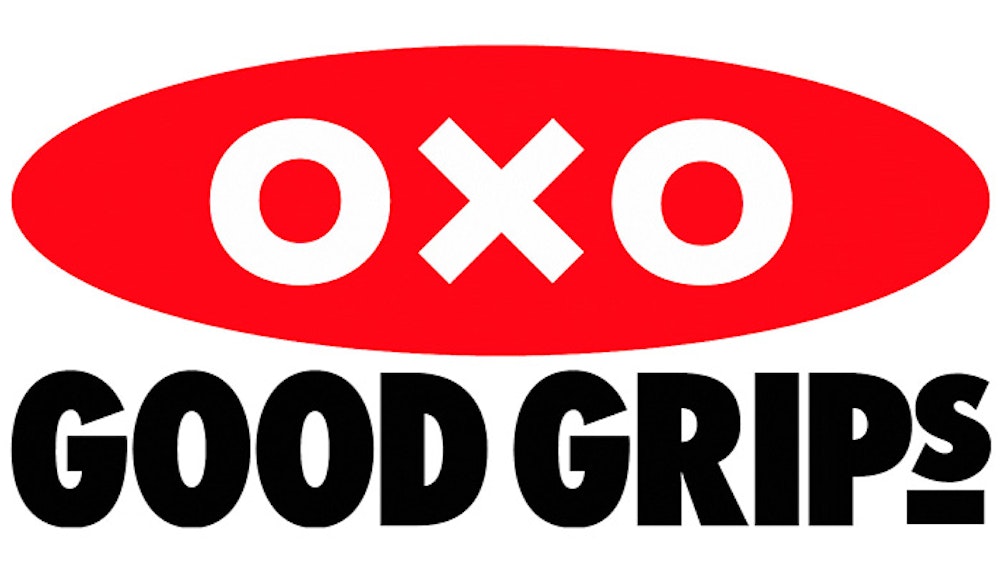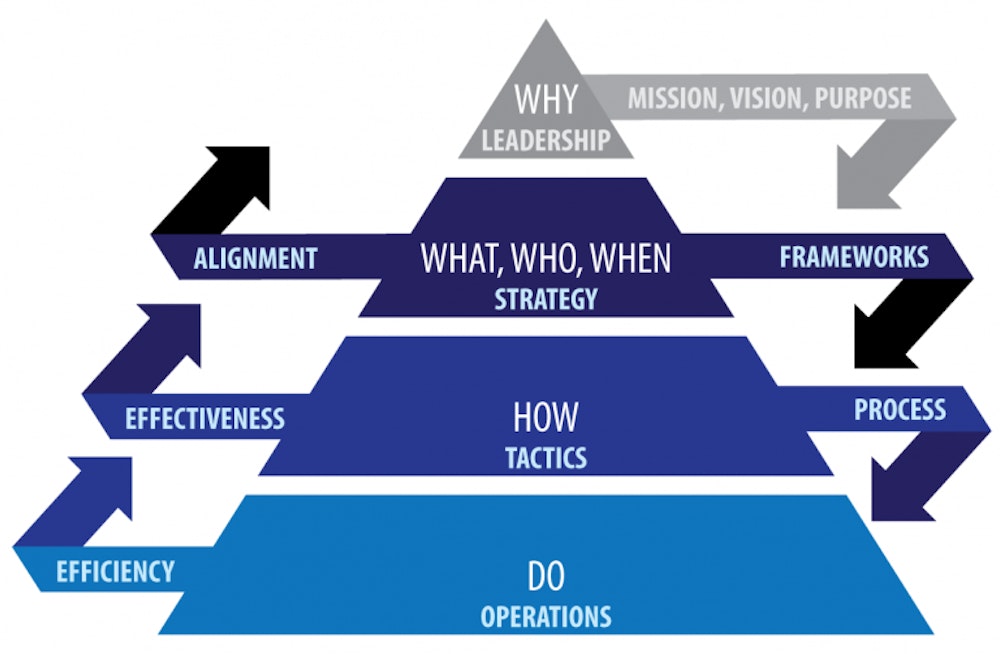Your mind is under attack every single day.
You take in 11 million bits of sensory data per second – a truly staggering figure. But here’s the kicker: your brain can only consciously process about 50 bits per second.
Faced with such an overwhelming amount of input, your brain has no choice but to cut corners and focus on only what it deems to be most important.
The vast majority of this information goes unnoticed, passing beneath conscious awareness like water over the river bed. For instance, you probably weren’t thinking about how your right foot was feeling until you just read this sentence. Your brain deemed this data to be irrelevant, so there was no point wasting conscious awareness on it.
This probably seems abstract, and not particularly relevant to your needs. However, this same basic premise holds up when we turn our attention to how you deal with things as an entrepreneur, a CEO, a manager, or an employee.
You already have, and use, heuristics. But do you control them?
Each working day, we are subject to dozens of discrete situations, absorb vast quantities of information (either consciously or unconsciously), and make hundreds of micro-decisions. Over time, these separate events are much like bricks in a wall: they either stack atop one another to build the intended structure, or they are laid haphazardly, leading to a structure that clearly demonstrates the lack of forethought that went into its construction.
Assuming that we are all hoping to achieve something in particular with our business, it is then logical to assume that we want our decisions and actions to be in alignment with this goal. In order to ensure that these things will lead us towards the achievement of our aim, we need to have guiding principles in place that will lead us there.
These guiding principles are known as heuristics. In layman’s terms, you can think of a “rule of thumb”, “common sense”, or “best practices”. They contribute to your mental framework, enabling you to shortcut the decision-making process.
The study of heuristics has gained a lot of popularity in the last decade. The Art of Thinking Clearly (Rolf Dobelli) and Thinking, Fast and Slow (Daniel Kahneman) are two examples of books that go into great detail explaining the common “cognitive biases” that we’re all prone to.
The term “cognitive bias” may have negative connotations, but they can, in fact, be quite useful. Having a routine way of dealing with routine issues means that these low-impact decisions will take less mental energy than they usually would. This ensures that your ability to deal with the big, difficult issues will be that much greater.
The mental models you adopt have a profound impact on the decisions you make. When you’re running a business, it’s critical to ensure that you’re making good decisions as often as you can. For this reason, your heuristics can be the catalyst for your success or the reason for your failure.
Where do Heuristics Come From?
Over time, best practices emerge as analytically-minded individuals abstract meaning from the events happening to them and around them, either as a consequence of their own decisions or via some externality. We’ve been burned once, so we won’t touch the fire again. One of our customers scammed us, so now we expect payment in advance.
No matter what industry you’re in, it’s likely that there are some rules that everyone follows. Stuff like outsourcing of production, typical working hours, the manner of acquiring clients… these tried and tested practices can provide the framework a new business needs in order to enter a market. Without these standard procedures, first-time entrepreneurs are beset by limitless possibilities. Do we work on weekends or not? Do we spend on advertising, or do we rely on word of mouth and referrals?
Decisions like these are vastly simplified by having heuristics that address them in advance, guiding decision-making in a predictable manner. However, there are both advantages and disadvantages to having heuristics in place.
Advantages and Disadvantages of Adopting Heuristics to your Business
Principles
Adhering to your own set of carefully determined rules/heuristics/guiding principles can ensure when coupled with appropriate metrics, that you are on the right path to achieving your goals.
Without a set of solid heuristics in place, you’ll be overwhelmed with data and will have no way to sift through it. Imagine if your brain had no way of filtering through the 11 million bits of data per second it receives. You wouldn’t be much good for anything, let alone trying to figure out the best response to a particular situation!
By employing well-chosen rules, you can apply the most valuable tool in your arsenal: focus. Abstractions simplify your pursuit of a particular objective by standardizing your responses to stock situations. These guiding principles must be chosen with the end goal in mind.
Customer Relationship
If your goal is to cultivate good customer relationships, then an example of a suitable heuristic maybe “We give instant refunds for genuinely unsatisfactory orders (<$50 value)“.
Not a bad rule of thumb. This would likely go a long way in maintaining positive customer relationships. No one wants to have to deal with difficult support staff when they have an issue with their purchase, particularly when the amount is relatively insignificant. This rule ensures that customers are happy, your support staff is happy, and you (as the business owner) are happy too.
Assumptions
Carefully chosen policies and practices (like the ones listed above) can be a huge help to your decision-making process. However, failure to recognize that these rules are merely representations and not reality itself can sink your business. They’re representations because they are based on assumptions… and these assumptions may or may not be true all of the time.
In the case of our refund example, we’re making the assumption that we will be able to determine what a “genuinely unsatisfactory order” is. Let’s pretend that a customer contacts us to tell us that their package arrived without the product inside. How can we be sure what really happened? How can we be sure that the customer didn’t simply remove the product from the package and then take a picture of the empty box?
As well as the above, how do we know we can bear to refund all of these orders? Have we determined what percentage of transactions are refunded? Is this an acceptable figure?
Could we bear that?
20th-century scholar Alfred Korzybski is most notable for the phrase “the map is not the territory”. This tells us that our perception of reality is not reality itself. The heuristics we employ are tools that filter our everyday experiences into streamlined decision-making fodder.
All abstractions have the potential to be false. In today’s constantly changing business environment, what we all know to be true today could be disproved tomorrow. Disruptive businesses such as Uber, Airbnb, and Facebook redefine what’s possible, forever raising the bar on what’s possible for an innovative business.
As the owner/operator of a business, it’s your job to critically evaluate your heuristics. Business is a game. The particular kind of game it is depends on the rules you adopt. Some of these rules are ironclad (e.g. I need to focus on cultivating good customer relationships), while others are more flexible, often bordering on being strategies (e.g. social media use, 24/7 contact times). Clinging too tightly to the heuristics you’ve adopted, without taking the time to really consider whether or not they’re useful, is a recipe for disaster.
The main danger arising from failing to analyze your heuristics is being unable to deal with outliers/unique circumstances effectively. Average statistics are affected by outliers, not the other way around. You have to take the existence of these outliers into account if you want to avoid being limited by rules you didn’t realize were restricting you.
One way to avoid the issue of unexpected outliers is, to begin with, them in mind. To illustrate this point, let’s examine the case of OXO International.
Case Study: OXO International
The tendency to cater to the outliers is found in many successful businesses. Internationally recognized homeware manufacturer OXO International was founded on creating utensils that were more comfortable to use. Sam Farber (the company’s founder) was inspired to develop this range of easy-to-use kitchen tools when he noticed his wife, suffering from arthritis at the time, struggling with a standard vegetable peeler. The utility and appeal of OXO’s products were not limited merely to people with hand problems, and it quickly became a staple in the industry.

You need to remember what made your offering appeal to this other audience in the first place. Your dedication to making something that perfectly met the needs of one group meant that other groups – seeing the benefits others were enjoying – were eager to try it out. This is a good thing… as long as you can keep it in context.
If a business neglects to continue to meet the needs of its core audience and instead focuses on tailoring its offering more heavily to its peripheral customers, they risk losing everything. Your current fertile fields should not be abandoned in favor of a greener hillside on the horizon. While pivoting focus can often make sense for a business, such a decision cannot be taken lightly.
A pivot is not a broadening of focus, merely a change in focus. You can, and should, look at these outliers to try to better understand the value your product and service provides. You may even need to change some of your heuristics to account for this new view but do so very carefully. Do not lose focus and become generic. New opportunities must be evaluated in the context of how they align with your ultimate mission.
Summary
Abstractions, heuristics, mental models, guiding principles… they’re all different words for the same thing: the tools you use to solve the problems you face. Whether you’re consciously aware of them or not, you’re operating with a set of them right now. If they’re well-chosen and appropriate for your situation, then they can help guide you to success. If they’re not… well, I’m sure you know where that leads.
Heuristics can be extraordinarily useful to you. As with many other things in life, it’s a balancing act: you need to know when to simplify (i.e. apply heuristics) and when to abandon them, dealing with something on an individual basis.
So how do you go about determining which heuristics are helpful, and which ones are only hurting you?
It goes back to our basic organizational pyramid.

Our ultimate vision sits on top, trickling down into the strategic, tactical and operational levels, in turn, all aligned in perfect harmony… or so we hope.
When we have a clear picture of what our ultimate mission is, it becomes a lot easier to determine which abstractions (Frameworks) and heuristics (Processes) we choose. When we zoom out and look at the big picture, our chosen frameworks and processes should serve the overall purpose of the business.
If we have a luxury brand image… then competing in price wars is probably a bad idea.
If we want to cultivate good customer relationships… then having a well-trained, friendly support staff is a no-brainer.
Our abstractions and heuristics, when carefully selected, allow us to get stuff done at the lower levels, while also ensuring that we continue to fulfill our pre-defined mission.
Your Next Steps
- Review your organizational pyramid. Are your current decision-making strategies in alignment with your overall vision? If they’re not, figure out what you can change and start doing it.
- Consider your core audience – the people your offering is intended for. How can you better serve their needs? Are there improvements you can make that would leave them 2x more satisfied? 5x? 10x?
- Consider your peripheral customers – the ones that aren’t quite your target audience, but that still use and enjoy your offering. Is there anything you can do to better serve their needs without compromising your attention to your core audience? If so, analyze it and determine if it’s worth pursuing. What value does your product or service provider that you didn’t think about? Can you capitalize on that?
- If you’re considering pivoting into another market, be careful. Abandoning something that’s already working well can be a good idea if you’ve weighed up all your options first, but more often, a business tries to serve two groups at once and fails to do either particularly well. Remember, don’t just compare your two options: question the assumptions you are making to define those options. Doing this will allow you to make the best decision possible.
References
11 million bits of data per second





